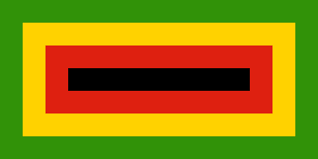By Farai Chirimumimba
The year 2018 marks 38 years of ZANU-PF rule so any credit or brickbats for all progress or lack of it must go to the party. So, how has ZANU-PF really fared in plundering a once transformed state backed by a successful economic, industrial, agriculture and social development of the 1980s?
To evaluate Zimbabwe’s performance under ZANU-PF’s one has to start at the political backdrop prevailing after independence. Between 1980 and about 1989, the state saw political instability and infighting in the Matabeleland and part of Midland province, which took its toll on the overall development in the state. However, during this period the government was also not sure on either to follow the Marxist model or capitalist way of development. There was so much confusion in terms of the economic thrust which also stalled development.
By the time the International Monetary Fund (IMF) sponsored Economic Structural Adjustment Programme (ESPA) programme come into effect around 1989-1994, there was an acceleration of economic meltdown as the blueprint focused on retrenchments in both public and private sectors. The government dropped ESAP in 1994 in favour of local economic models. The year 1996 become most successful with a record over 2 million tonnes of maize harvested, government racked in US$593.4 million from tobacco and exceeded 24 tonnes of gold. In addition, cotton production went upwards due to better planning and harvesting. These 1996 records were onlybroken in 2017 were tobacco earned the country a whooping US$700 million, gold deliveries were expected to bridged the 24 tonnes set in 1996 and maize harvest was over 2.2 million metric tonnes. However, cotton farming continues to struggle due to depressed price on the market. This is expected to change after government chip with free inputs for period 2017-2019.
Sadly, it was the 1997 when the Zimbabwe dollar losing 70, 5 percent of its value against the United States dollar on 14 November. The stock market subsequently crashed, wiping away 46 percent from the value of shares as investors scrambled out of the Zimbabwe dollar. The day is commonly referred to as “Black Friday”.
Depending on who is doing the analysis, the crash is attributed to a number of factors such as policy failures. The failure of the IMF’s ESAP has also been cited as a possible contributory cause. Some studies have concluded that the crisis was mainly driven by controversial government policies ranging from unbudgeted expenditure on war veterans to the controversial land reform programme and involvement in an unbudgeted regional war in DRC that drained the country over Z$10 billion.
Whatever the cause, the economy has struggled to recover from this collapse with macroeconomic indicators worsening to a hyper-inflation environment in 2007 leading to the adoption of the multi-currency regime presently being used. However, period 2009-2013 witnessed a steady economic growth, which averaged 5 percent per year. This can be attributed to the sound policies of the Government of National Unity (GNU) which was composed of the ruling ZANU-PF and opposition MDC-T led by Mr. Morgan Tsvangirai and MDC led by Professor Welshmen Ncube. However, after the 2013 harmonised elections, ZANU-PF retained power and there was re-emergence of the cash shortages reminiscent of the 2007-08 era and stagnant economic growth.
The November 2017 political shake-up, the move initially unleashed a wave of optimism among a people accustomed to bleak of hope until Mnangagwa sworn-in a “deadwood” 22 member cabinet in early December 2017.
As Emmerson Mnangagwa navigates the last 8 months of his predecessor, Mr. Robert Mugabe, he gave a shining report card of do list during the December 2017 extra-ordinary congress — before the 2018 harmonised elections expected in July/August. Speaking at the start of a single day extra-ordinary congress in Harare, President Mnangagwa was not expected to give a work report that summed up his achievements so far, rather he laid out where he wants to take Zimbabwe in his first 5 year term as leader of ZANU-PF, which started after this congress and possibly beyond the harmonised elections if he wins what will also be his first term in office. Standing on a podium before over 7,000 delegates, he spoke for 40 minutes.
As we go towards the #ED100Days, it will be a time to reflect on the promises of the first 100 days in office. At the extra-ordinary congress Mnangagwa said: “The biggest task at hand is rebuilding the country and to improve the livelihoods of all those that call Zimbabwe home.” Only time will tell!
